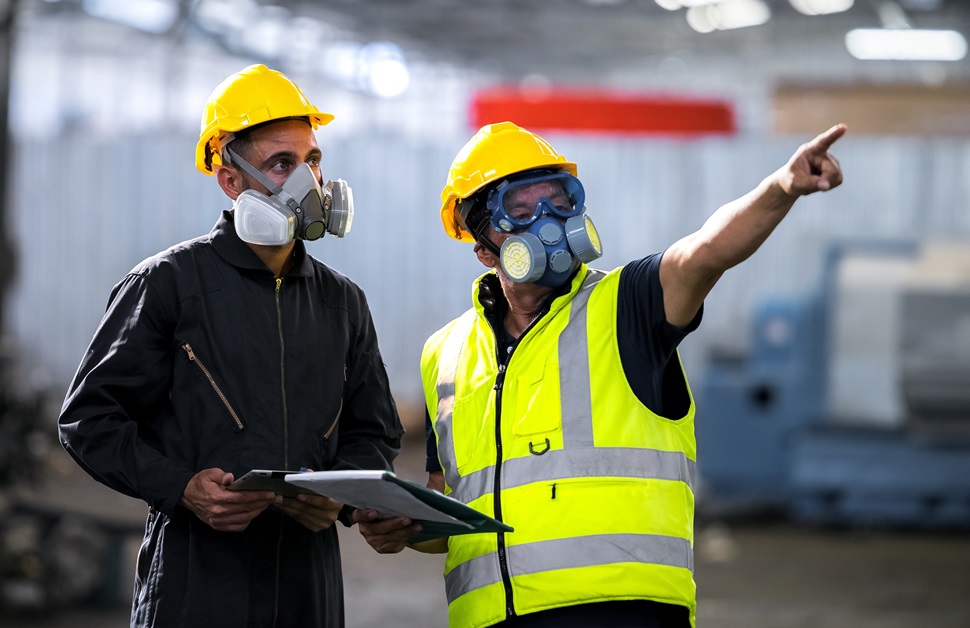Odour Assessment for Planning
A planning project can both suffer from and cause odour impact, especially if the development site is in close proximity to notable odour sources such as commercial kitchens from restaurants, departments for sewage treatment and waste management, and facilities for composting, dealing with livestock and initiating industrial processes.
In order to guarantee that odour emissions avoid causing potential harm to sensitive receptors, vulnerable individuals and areas intended for commercial or residential use with high volumes of people, an odour assessment will be necessary before the local council will consider granting planning permission and allowing the development to move forwards as intended.
Causes of Bad Odour
Sources of odour appear in all industries and settings, with a wide range of emissions from agricultural, commercial, environmental, industrial, medical, municipal, transportation and indoor processes and materials. While the list is effectively endless, the number of common causes of odour typically includes a similar selection of particularly unpleasant smells, such as:
- Appliances
- Bacteria
- Bins
- Chemicals
- Cigarette and e-cigarette smoke
- Crops
- Disinfectants
- Fire smoke
- Food
- Gasses
- Insufficient ventilation
- Machinery
- Medical waste
- Mould
- Pets
- Sewage
- Sweat
- Vehicles

What is an Odour Assessment?
Also often labelled an odour impact assessment, odour risk assessment or odour survey, an odour assessment is one of the several different forms of air quality assessment, but instead of dust or potentially harmful pollutants, it surrounds nasty smells. That said, depending on the cause of the odour, it could equally pose dangers to human health and the environment.
As with air quality assessments, any time a proposed development could negatively affect the air quality – except namely the scent – an odour assessment will be needed. Likewise, it will also be necessary if known existing odour issues in the area are likely to interfere with a planning project or the end product in the future. Odour treatment works are often bespoke to cater to the specific objectives of the client, meaning that they can include a selection of different exercises and practices.
A developer will usually organise a survey regarding odour for planning purposes, such as to demonstrate to the local authorities that the development will not cause excessive odour and receive assurances over odour from local sources. As part of the planning process, the report from an odour assessment can then be presented to the local planning authority to encourage a successful planning application.
Odour Survey
Odour Assessment Methods
A generic odour assessment consists of the following five stages:
- Briefing – speaking to the developer to gauge the development plans, the project conducted on the site, and expected types and quantities of odours
- Planning – visiting the development site to look over proposals, plans, the plot of land itself and any odour control systems to evaluate the suitable approach for the assessment
- Sampling – retrieving odour samples from the site via the use of highly-specialised survey equipment to measure density, frequency, intensity, location, offensiveness and receptors
- Testing – analysing the samples taken from the development site in an accredited laboratory based on the data sets as listed in stage three
- Reporting – interpreting the results from the laboratory test results to provide advice and recommendations that will allow the client to meet their goals
Additional methods that may be incorporated into odour impact assessments include:
- Chemical analysis
- Complaint monitoring
- Dispersion modelling
- Electric nose analysis
- Field inspections
- Olfactometry
- Sensory evaluation
- Simulation
- Sniff surveying
Odour Assessment Report
A report will be created after all assessments for planning, featuring all details from the survey for the attention of local authorities and any relevant regulators and organisations involved in the development process. The consultant in charge of the inspection will put together the report for odour assessments immediately after it has been completed, and it can then be passed on to the local planning authorities.
Numerous factors within an odour assessment report include a broad overview of the survey process, the findings from odour analysis and sampling, a review of odour characterisation and intensity, steps that mitigate poor odour and air quality, and consideration of compliance and regulations. Everything in the report will work towards securing planning consent from the local planning authority.
Odour Management Plan (OMP)
At any point that a survey determines the odour emissions are significant or could even yield a potential risk, an odour management plan (OMP) may be attached as part of the odour assessment report. The inclusion of an OMP, however, depends on the circumstances of the inspection and whether it will play a role in satisfying the aims of the planning project.
The purpose of odour management plans is to provide a breakdown of odour emissions in an outlined area, highlight potential impacts, and supply the developer with mitigation measures that will facilitate the continuation of the development. All components of the OMP can then direct the outcomes of the report and show complete transparency to the local council.

Guidance on the Assessment of Odour for Planning
Without a sufficient level of adherence to relevant laws, planning policies and regulatory guidelines such as from the Environment Agency (EA) and Natural England / Natural Resources Wales, an assessment of odour will be unreliable and the results could justifiably be classed as void. That’s why we guarantee that our odour assessments are strictly conducted under a best-practice framework and in compliance with all responsible bodies.
Existing pieces of legislation that actively support air quality and ensure moderation over odour in relation to development include the Control of Pollution Act 1974, the Environmental Protection Act 1990, the Town and Country Planning Act 1990, the Environmental Permitting (England and Wales) Regulations 2016, and the Industrial Emissions Directive (IED).
Odour Assessment Consultants
A pledge Arbtech makes to all clients is to only send out consultants and surveyors that possess the necessary experience, training, licensing and qualifications. Our team operate with all of the crucial credentials, as well as the correct attitude and integration of best practice criteria to undertake high-standard odour assessment services.
Every surveyor for odour assessments in our ranks covers a certain part of the UK, giving us the scope to cater to all clients regardless of where they are situated. Under an expected level of insight and expertise, they are able to deliver air quality management and odour assessment services to clients with the level of detail and quality needed to assist their planning application to the local council.
Discuss Your Needs with Our Team
You are entitled to a free quote assembled by our team before committing to one of our odour assessments. All you need to do is fill in our quote form online, call us at the number at the top of this page or visit our contact page and give us as much detail as possible about your project and site. From there, we can put together a quote for your development.
Immediately after the odour assessments have been completed, you will receive a comprehensive report and the corresponding odour management plans if required, and if the potential odour emissions call for other methods of air quality management, the professional surveyors in our ranks are equally capable of instructing on any further surveys to support planning.


